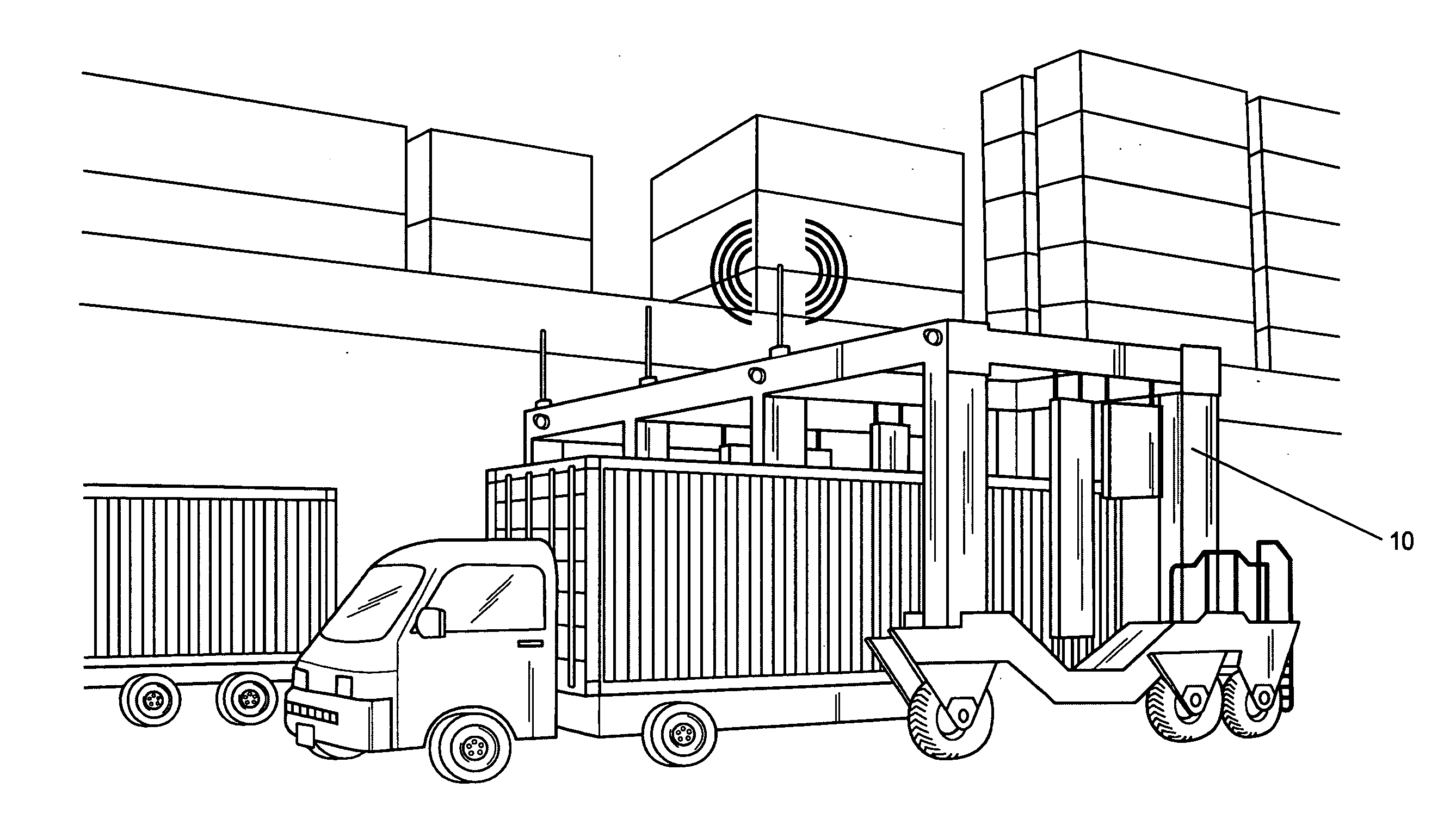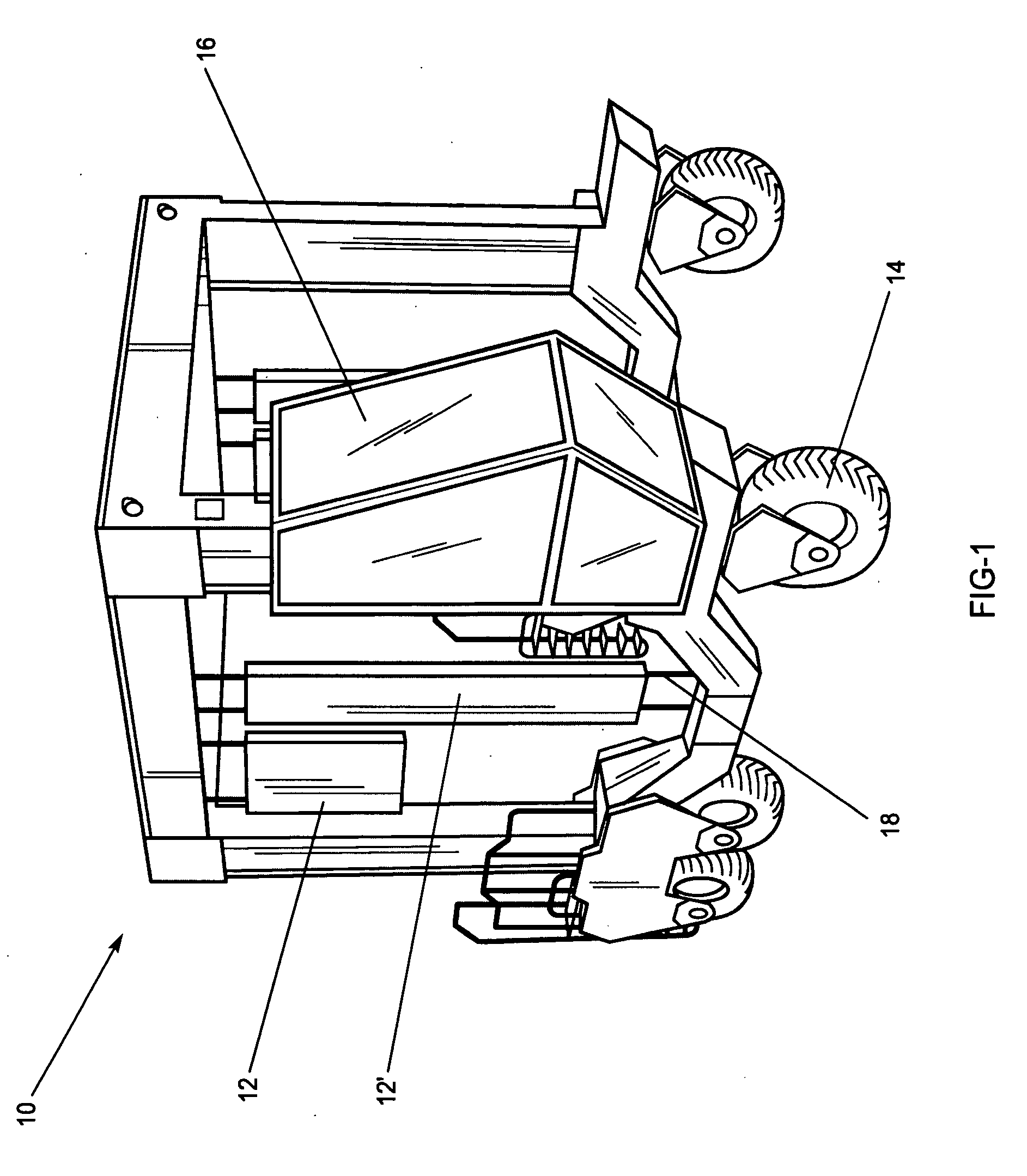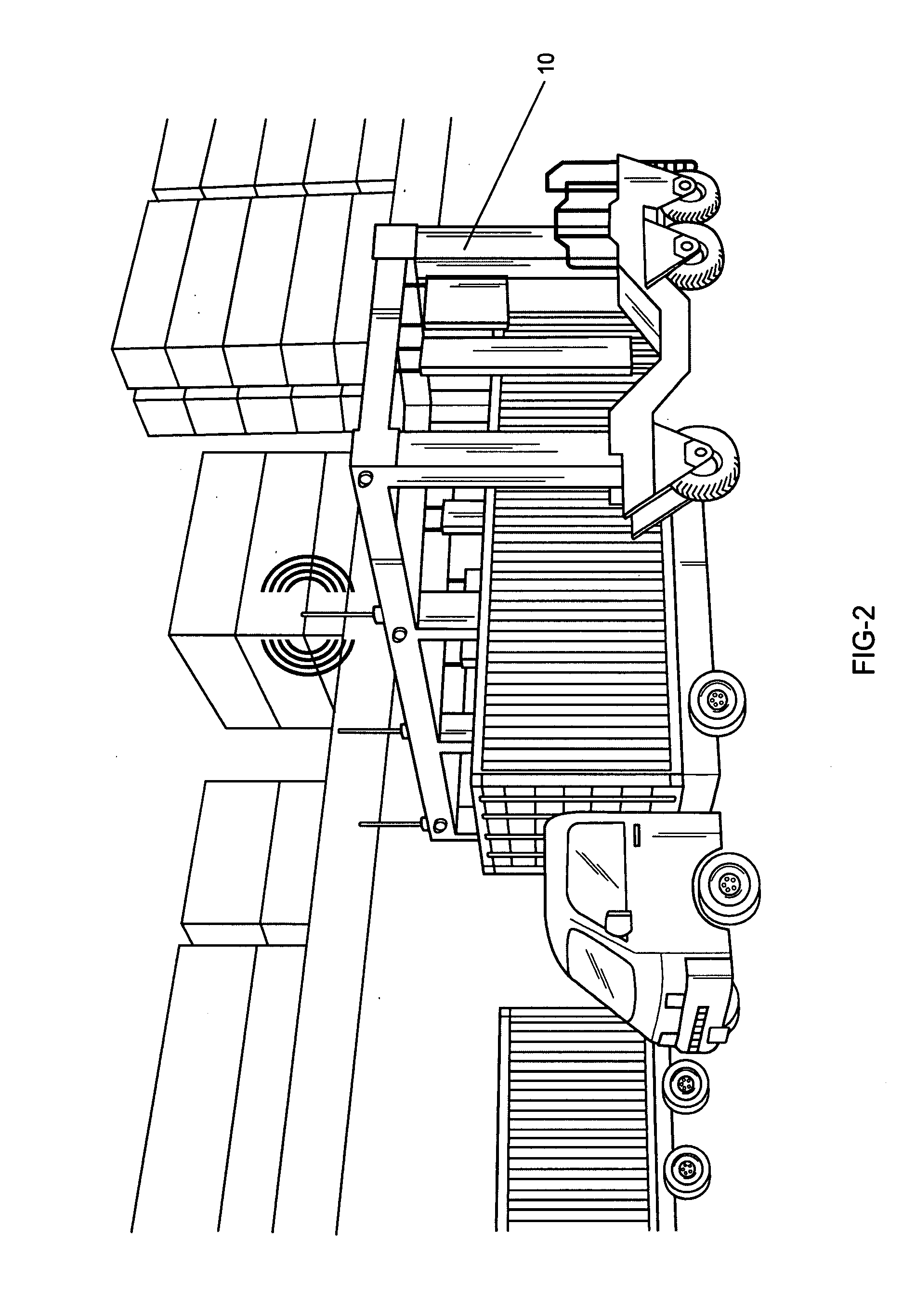Detector System for traffic lanes
a detector and traffic lanes technology, applied in the direction of optical radiation measurement, fire alarms, instruments, etc., can solve the problems of unreasonable force on items, impractical monitoring, and inability to raise and lower detectors in an automated fashion
- Summary
- Abstract
- Description
- Claims
- Application Information
AI Technical Summary
Benefits of technology
Problems solved by technology
Method used
Image
Examples
Embodiment Construction
[0032] The term “wheels” as used throughout the specification and claims is intended to include any device, apparatus, element, structure, and / or combination thereof, which enables a first element to be moved across a second element, and can include, but is not limited to any type of wheels and tires, tracks, skids, etc., as well as combinations thereof.
[0033] The term “detector” as used throughout the specification and claims is intended to include any and all active and passive devices, apparatuses, and / or methods capable of detecting or inferring desired information, including but not limited to detection of light, sound, heat, odor or smell, chemical or physical substance, biological agent, shape, radiation, etc.
[0034] The term “radiation detector” as used throughout the specification and claims is intended to include any and all devices, apparatuses, and / or methods capable of detecting or inferring radioactivity, including but not limited to radiation detectors of any kind, s...
PUM
 Login to View More
Login to View More Abstract
Description
Claims
Application Information
 Login to View More
Login to View More - R&D
- Intellectual Property
- Life Sciences
- Materials
- Tech Scout
- Unparalleled Data Quality
- Higher Quality Content
- 60% Fewer Hallucinations
Browse by: Latest US Patents, China's latest patents, Technical Efficacy Thesaurus, Application Domain, Technology Topic, Popular Technical Reports.
© 2025 PatSnap. All rights reserved.Legal|Privacy policy|Modern Slavery Act Transparency Statement|Sitemap|About US| Contact US: help@patsnap.com



